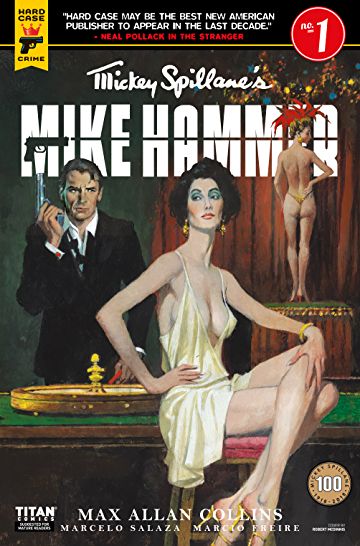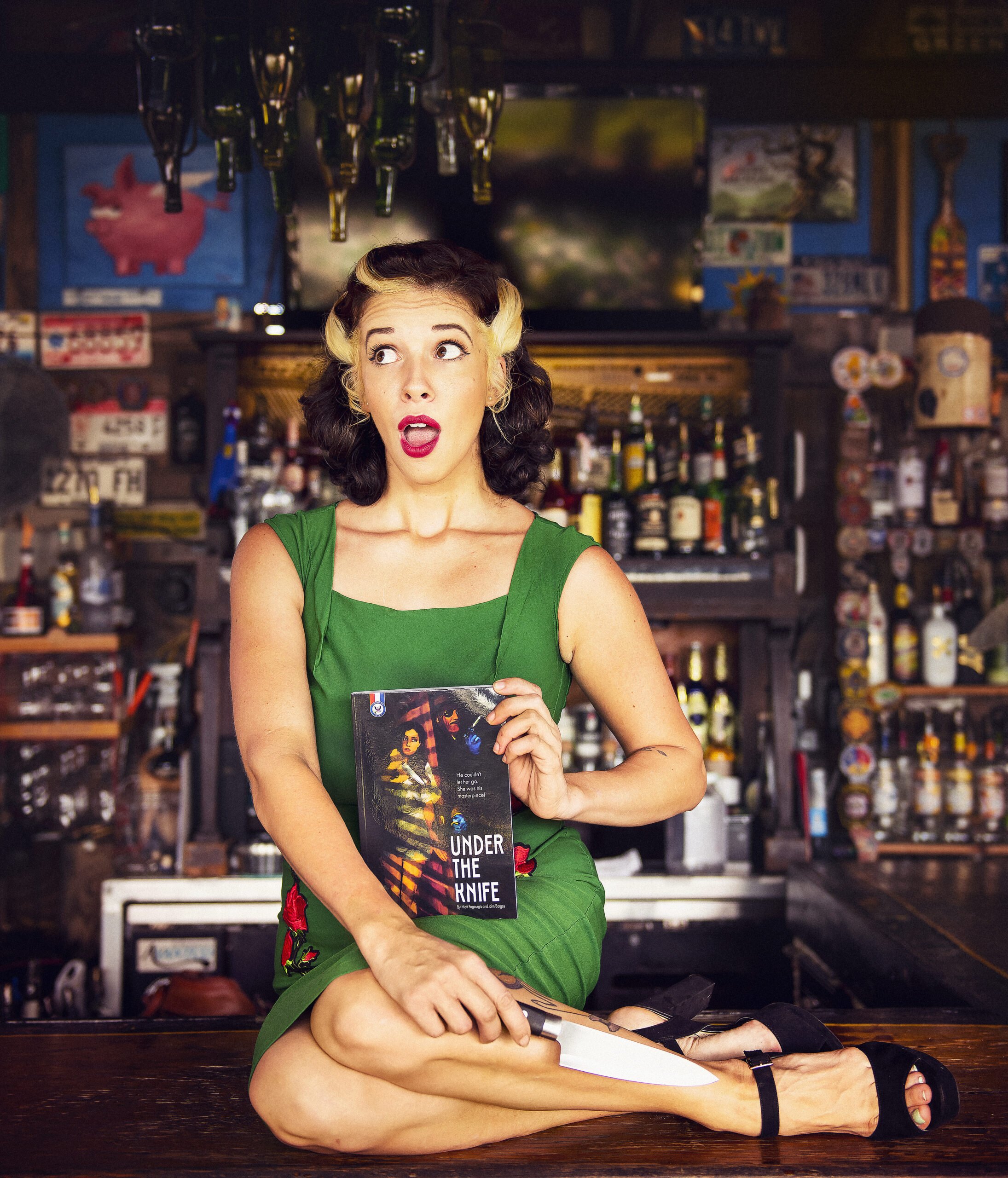Usually when we tell people we write pulp fiction the person we’re talking to will ask ‘What is Pulp Fiction?’ This happens so much we wrote an article about it on our old website when we used to go by the name of Shit Show Pulps. Ironically, that article was used against us when we filed for a trademark under the current company name, and caused us to go back and forth with the US Trademark office about what Pulp Fiction is. We’ve talked about it so much I feel we’re decent authorities on the matter.

Pulp Fiction and Hardboiled Crime stories are very similar, but I’d argue that hardboiled is a subgenre of the latter. A story can be Pulp Fiction and not be Hardboiled (science fiction is a good example of this). But a Hardboiled story like Mickey Spillane’s Mike Hammer series could also be considered Pulp Fiction. It’s dark, it’s gritty, it’s not something you read in polite company.
Nowadays “Pulp Fiction” is a generic term and often thought to be invented by Quentin Tarantino. We love Tarantino movies but Pulp Fiction had a 100 year history when Jules Winnfield and Vincent Vega discussed Big Kahuna Burgers and whether or not Marcellus Wallace looked like a bitch.

Pulp Fiction, like the Detective Story is (arguably) an American invention and both are intertwined. The Detective Story’s roots began in Edgar Allen Poe’s, The Murders in the Rue Morgue which kickstarted the genre that we know today. Like Poe, Pulp was considered inferior to other literary achievements of the day. It was dark, gruesome, and hard hitting. And the writers didn’t give two shits about what the critics thought. They had to eat.
Pulp evolved from the Penny Dreadfuls and Dime novels of the Gilded Age, they were written at breakneck speed and meant to be consumed in the same manner.
In the 1880’s Argosy Magazine which is considered the first of the Pulps was founded. Printed on cheaper pulp-wood paper these stories were cranked out rapidly, and the freelance writers getting paid a penny a word kept the stories coming.

Pulp Fiction isn’t all detective stories featuring gangsters in fedoras who say “me-yea!” At first magazines like Argosy published stories for every taste. Issues would feature all sorts of genres, a science fiction story, aviation tales, mystery stories, and Western adventures.
These magazines soon specialized in one particular genre with publications like Black Mask publishing mystery stories and Weird Tales taking the crown for Fantasy and Sci-Fi.

It was in Black Mask that we were introduced to the likes of Dashiell Hammett, Carroll John Daly, Erle Stanley Gardner, Paul Cain, and the legend Raymond Chandler. These stories inspired and were adapted into some of the best Film Noir movies a few decades later.

The height of pulp was between the world wars, when the world was suffering a crippling depression and an influx in crime brought on by a perfect storm of corruption, a bad economy, and Prohibition. It was in this time that the Hard Boiled cop or Private Eye like Chandler’s Philip Marlowe, Hammett’s Sam Spade, Spillane’s Mike Hammer, and Macdonald’s Lew Archer were personified. Their world was black and white and they were the good guys.

History repeats itself, what’s old is now new and you only have to look back at old newspapers to see the same themes of wall street corruption, racism, and disbelief in the government. The heroes in these stories reached out to people in their idealization, being lone wolves fighting injustice. We intend to do the same.
In the post war period these pulps turned into paperback novels which like the pulp rags featured bright and exciting cover artwork depicting lurid scenes of action intrigue that was matched in the prose of the books.
It was during this time that gave rise to the Men’s Magazines that writers like Mario Puzo and Stephen King cut their teeth in before they were household names. As the pulps influenced noir, the men’s mags begat action movies. It’s not hard to imagine Sam Spade and John McClane drinking at a bar as kindred spirits.
So that’s a brief history of Pulp Fiction, we intend to write another chapter in its storied pages, bringing the pulps to the 21st Century is one of our goals. Stay tuned, and stay classy.




